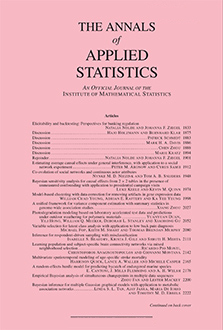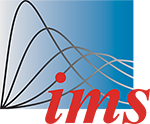Collaboration networks are thought to be desirable to foster both individual and population productivity. Often programs are implemented to promote collaboration, for example, at academic institutions. However, few tools are available to assess the efficacy of these programs, and very few are data-driven. We carried out a survey at California State University, San Marcos during the 2012–2013 academic year to measure five types of collaboration ties among professors in five science departments at the university over time. During the time period of study, professors participated in NIH-sponsored curriculum development activities with members of other departments. It was hypothesized that participation in these activities would also foster overall collaboration between these departments.
This survey enables the exploration of several methodological and theoretical challenges in network research. In this paper we develop a statistical approach to assess the impact of programmatic interventions on collaboration using model-assisted social network analysis. We derive and implement a hierarchical Bayesian approach to modeling error-prone responses in surveys and examine the effect of an intervention on network structure. Based on this analysis we find an increase in educational collaboration over time after adjusting for the length of time each professor had to form collaborative ties at the university.





